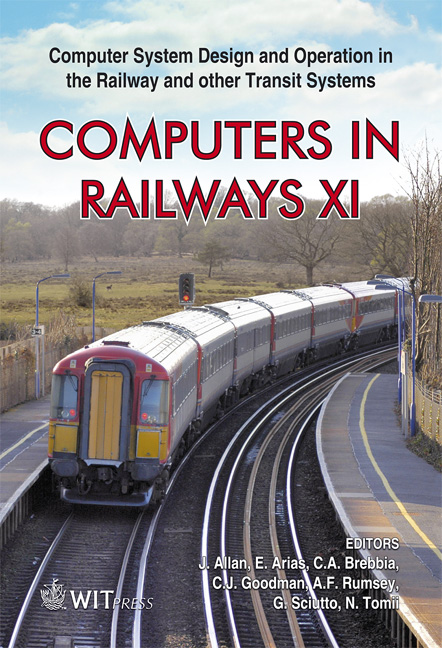Evaluation Of Punctuality On A Heavily Utilised Railway Line With Mixed Traffic
Price
Free (open access)
Transaction
Volume
103
Pages
9
Page Range
545 - 553
Published
2008
Size
388 kb
Paper DOI
10.2495/CR080531
Copyright
WIT Press
Author(s)
O. Lindfeldt
Abstract
The Western Main Line (450 km) between Stockholm and Gothenburg is heavily utilised for mixed rail traffic. High speed trains are mixed with regional, local and freight trains and the congestion clearly affects the overall punctuality. In order to evaluate the possible total effects of reduced primary delays, the high speed operator, SJ AB, took the initiative to perform an extensive simulation study in RailSys, which was carried out by the Royal Institute of Technology. As preparation for this simulation study delay data was compiled for all trains using the line. This paper briefly discusses the ideas of stochastic disturbances in the simulation of rail operation and also the compilation methods for primary delay distributions. The resulting distributions from the Western Main Line were then analysed. It was clearly shown that the primary delays are extensive and have a high degree of variability. The paper ends with a discussion about the validation of the simulation model and possibilities to develop methods for more accurate stochastic modelling. Keywords: simulation, delay distribution, perturbations, mixed traffic. 1 Introduction The demand for rail passenger traffic and freight transport is steadily increasing in Sweden and the utilisation has now become troublesome in many sections of the railway network. The Western Main line (450 km), connecting Stockholm and Gothenburg, is one of the most heavily utilised lines. On this line the traffic consists of an unfavourable mix of high speed (200 km/h), regional and local
Keywords
simulation, delay distribution, perturbations, mixed traffic.





